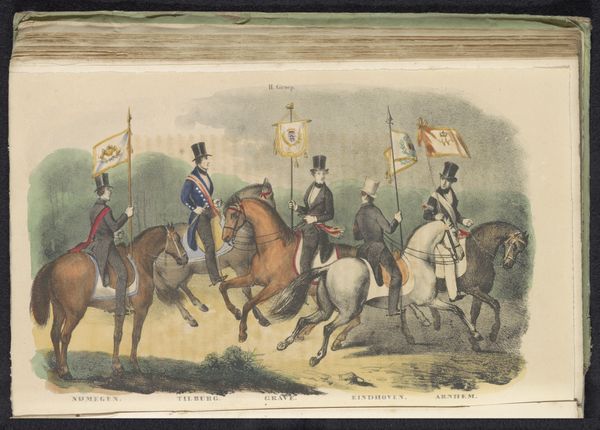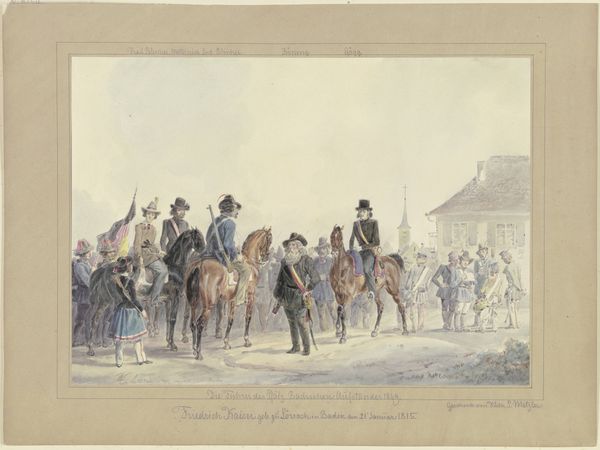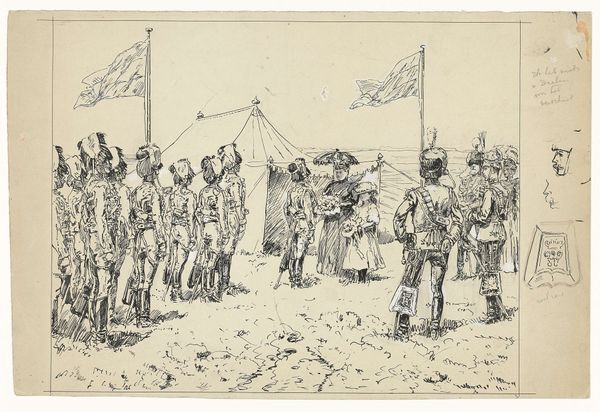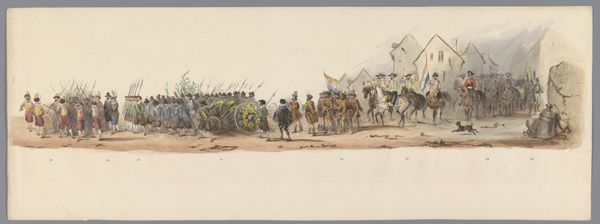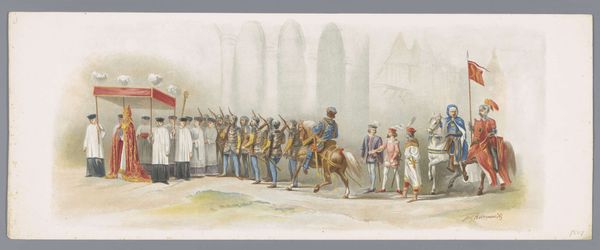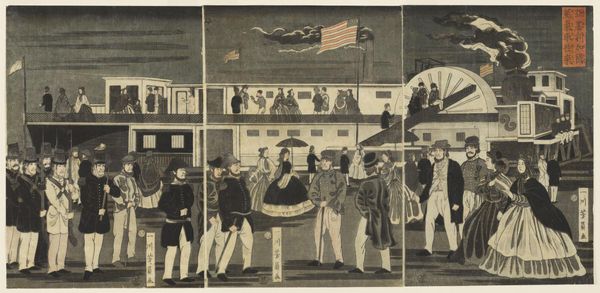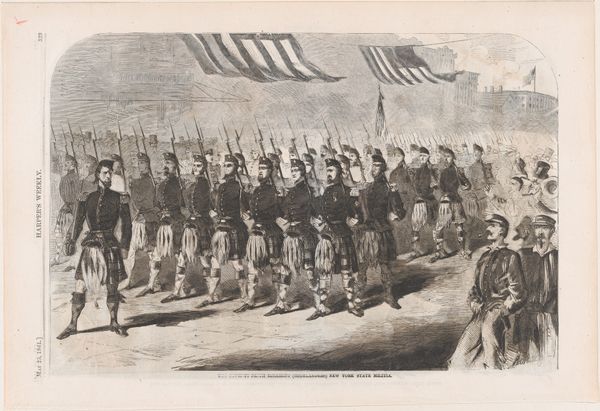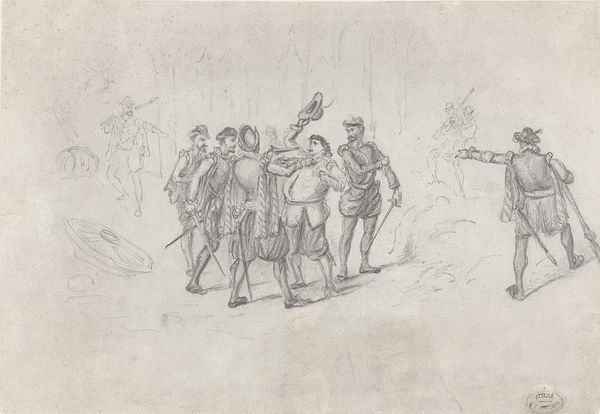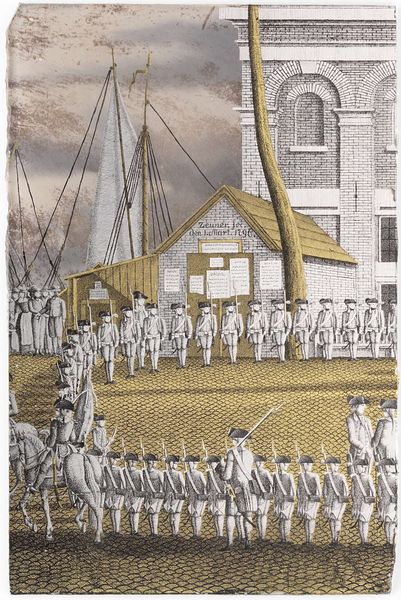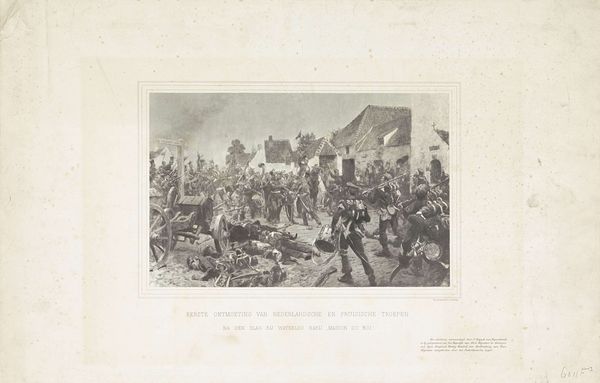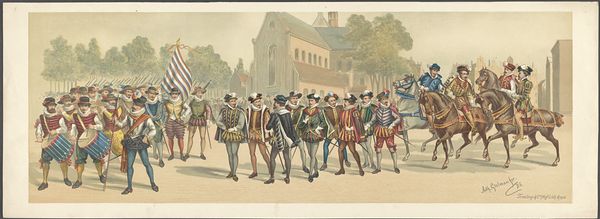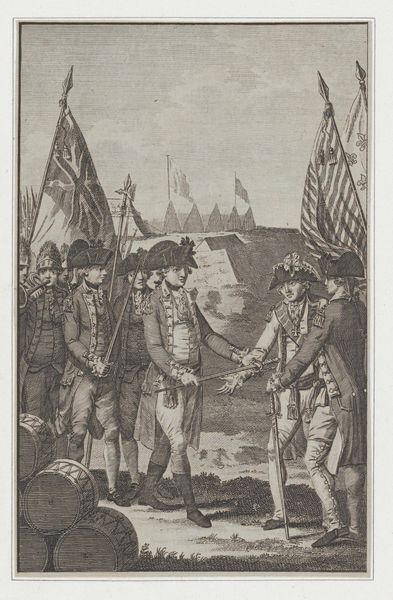
drawing, watercolor
#
drawing
#
water colours
#
watercolor
#
watercolour bleed
#
watercolour illustration
#
genre-painting
#
history-painting
#
watercolor
Dimensions: height 300 mm, width 780 mm
Copyright: Rijks Museum: Open Domain
Editor: So, here we have an anonymous watercolor titled "Utrechtse maskerade van 1876 (vierde plaat)." It's a rather orderly procession, almost like a theatrical display. I'm curious about its purpose and underlying narrative. What do you see in this piece, beyond the surface level of a historical parade? Curator: What I see is a deliberate performance of power, rooted in Utrecht’s historical context. Think about 1876— a period of intense nation-building across Europe, coupled with a rise of historical pageants and reenactments. How do these historically-themed processions contribute to ideas of identity, both collective and individual? Editor: Well, it's definitely showcasing some kind of idealized past. The costumes, the armour... it all feels very romanticized. Are they maybe trying to solidify a specific narrative about Dutch history? Curator: Exactly! These kinds of masquerades often served as powerful tools for constructing and reinforcing national identity. What aspects stand out regarding class or status? Are there any elements that might hint at underlying social tensions or hierarchies? Editor: Hmm, the knights and the people on horseback clearly have the most ornate costumes, suggesting wealth and status. But what about the foot soldiers? Their presence signifies something different; collective labor, perhaps even vulnerability. Curator: Precisely. Now consider the visual rhetoric - the crisp lines and bright colors that make this historic depiction into entertainment. It’s not about historical accuracy, it's about shaping public memory and legitimizing a specific cultural identity. How might contemporary audiences receive that visual representation today? Editor: That makes me think about who is included and excluded from this narrative. The focus is so strongly on military and nobility...what stories are not being told here? It is definitely propaganda. Curator: Exactly! So, next time we view artworks such as this one, we need to think of it in intersectional terms. Art production, representation and interpretation are influenced by multiple categories of identity. Editor: Absolutely! It's a reminder that even seemingly straightforward historical depictions can be complex sites of cultural and political negotiation.
Comments
No comments
Be the first to comment and join the conversation on the ultimate creative platform.

